Revolutionary FUE Method
The most modern and minimally invasive surgical procedure for hair, beard, moustache and eyebrows transplantation, which has been successfully performed in our hospital for years.
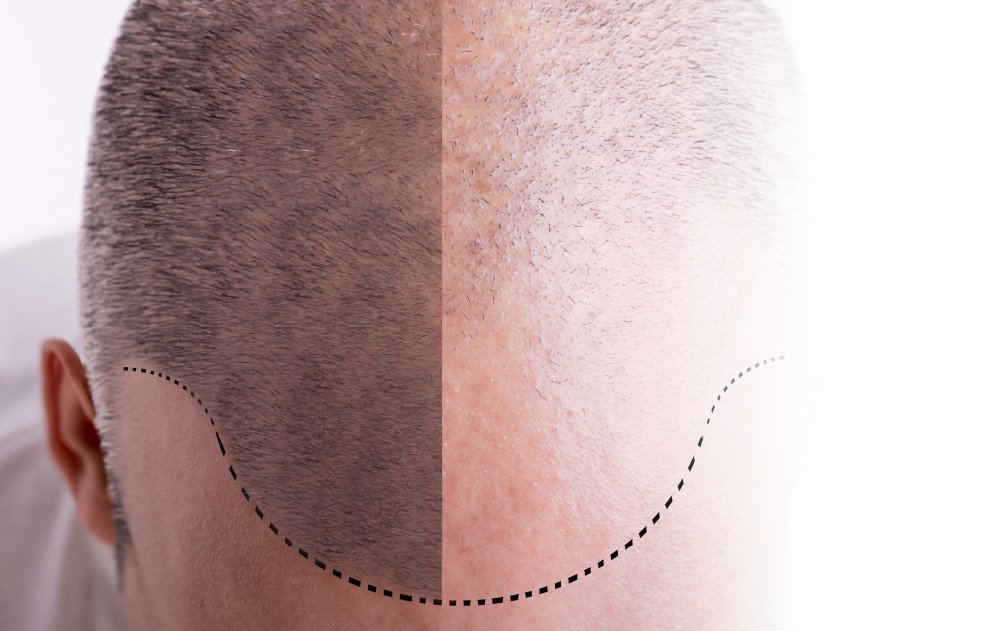
The most modern and minimally invasive surgical procedure for hair, beard, moustache and eyebrows transplantation, which has been successfully performed in our hospital for years.
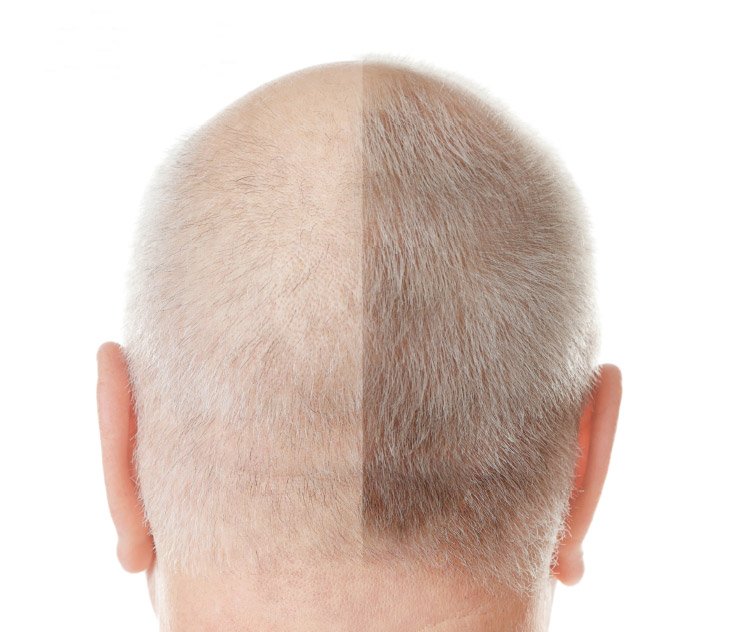
By the automated FUE technique the follicular unit from the donor site is taken and implanted into the area where hair is missing or thinned. Hairs are taken from a place where hair is genetically less susceptible to hair loss and once they are transplanted, they remain there permanently.
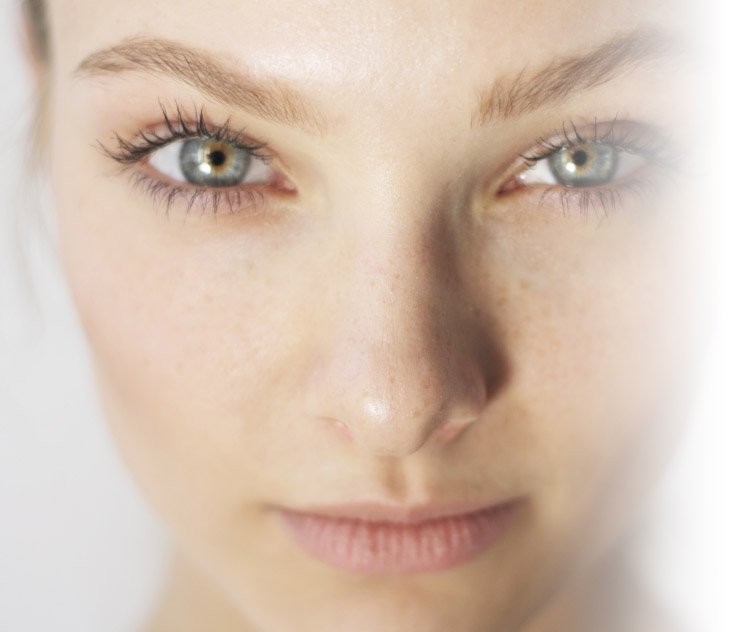
An eyebrow transplant is designed to restore eyebrows that are thin, sparse, scarred, or for some other reason completely or partially missing. The appearance of the eyebrows after transplantation is incomparably more natural than in alternative techniques such as tattooing or drawing. The procedure lasts about three hours and the patient can immediately go home after the procedure.
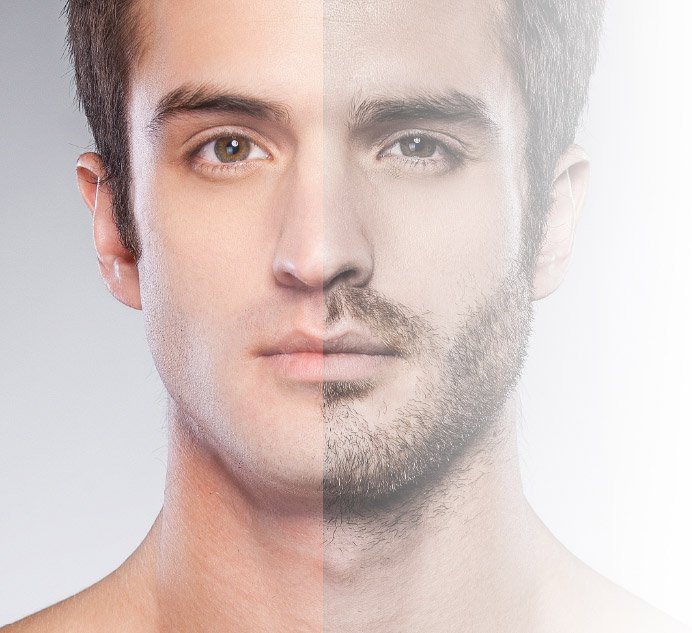
Beard transplantation is a surgical procedure that permanently resolves the missing or thinned hair on the cheeks, sideburns, moustaches and around the lips. After seven days it can be shaved for the first time, after which shaving becomes regular.
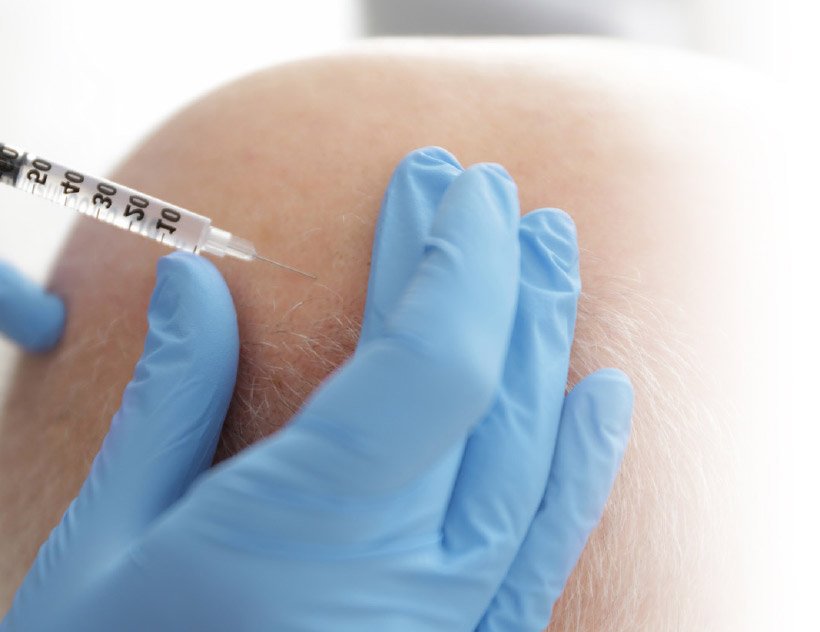
Platelet-Rich Plasma (PRP), a platelet-rich plasma, has a strong regenerative and healing effect on tissues and organs. The best results are achieved in the initial stages of hair thinning. The treatment activates hair follicles that move from the resting phase to the phase of active growth.
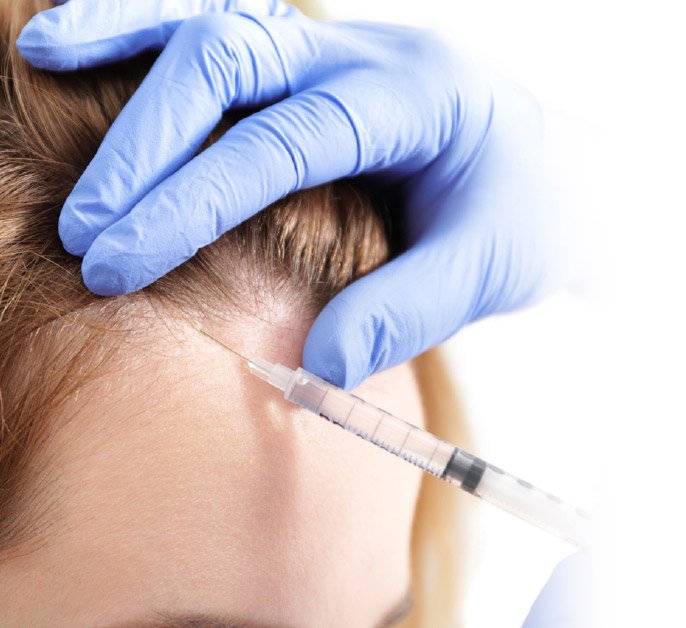
Mesotherapy is a minimally invasive medical method by which the active substances are injected into the middle layer of the skin known as mesoderm, avoiding in that way the systemic effect of medications.
Hair loss is a common aesthetic problem of a modern human, which is faced by almost everyone sooner or later. The factors influencing this process are numerous and significantly differ in the male and female populations. Some of them include: genetic predispositions, hormonal disorders, excessive smoking, medicines, emotional stress and infections. Despite the great number of factors that individually or jointly result in hair loss, the genetic component that causes the so-called androgenetic alopecia (hereditary baldness) is particularly distinguished. This type of alopecia accounts for over 90% of all causes of hair loss.

Alopecia androgenetica (hereditary baldness) is a genetically determined, progressive hair loss that occurs due to the increased sensitivity of certain follicles to androgen (male sex hormones). The basis of the development of this disease is the increased sensitivity of certain follicles to normal or slightly elevated concentration of male hormone in the blood. The 5-alpha reductase plays a key role in this process. This enzyme transforms the male hormone into the most active form of DHT, which is also the most responsible for hair loss.
The process is reflected in that healthy and strong hair in the first stages of the disease gradually gets thinner and becomes sparse and subsequently in some cases it can result in complete hair loss. Androgenetic alopecia (AAD) is the most common form of hair loss in both sexes. In the male population it occurs between 18 and 25 years of age, while in the female population it is possible to expect its later occurrence, by the age of 40. The earliest changes are on the front line of the hair and in the hair whorl region.
Changes in these regions in the first stages are reflected in the receding of the front and side hairline and hair thinning, while in later stages in some patients it is possible to expect that these two regions will merge into a completely bald surface. The disease usually develops in episodes that last for several years. The process generally ends in late 20s and early 30s. Then a complete clinical picture is formed and further hair loss represents a normal process of aging. Oily skin, seborrhoea and dandruff are also accompanying this type of alopecia. To set up the diagnosis, a detailed talk with the patient and the examination by a physician is required.
The treatment can be divided into general measures, local treatment and surgical treatment. General measures and local treatment give results only as long as the therapy is used and are limited only to hairs present at the time of initiation of the therapy, while the hair that has already been lost in this way cannot be returned. The only permanent treatment of this condition is hair transplantation.
If you wonder why the “male baldness pattern” occurs only in some people and not in others, although all men and women have hormones in their body that cause hair loss and receptors for them, there is no definite answer. There are some ideas, of which the most important include the following:
It should be noted, however that even the presence of both factors - genes and hormones alone is not sufficient to cause androgenic hair loss. Also, hair loss occurs within the necessary period of time during which the susceptible follicles will be exposed to male hormones, and this time varies from person to person. The development of a male baldness pattern depends on the individual genetics of each person and the level of androgen in their blood.
Moreover, even when there is no predisposition to androgenic hair loss, as people age their hairs begin randomly to decrease both in length and volume. This process is called miniaturization. As a result of aging, miniaturized hairs are discarded, so the total number of follicles decreases.
There are several types of hair loss, some of which are more severe, while some require a more complex treatment. Telogen Effluvium is one of the more common forms, but no less desirable to those suffering from it. This condition is caused by stress and is not permanent. Before hair loss takes place, the hair simply stops to grow. Hair can be in this condition for three months, before hair loss actually takes place. Unlike some more serious forms of hair loss, hair will begin to grow again in the next six to nine months.
Another form of stress-induced hair loss is Alopecia Areata, which occurs when white blood cells attack the follicles. This leads to a sudden hair loss, often in the strands, and within a few weeks the entire scalp can be affected. In the most extreme cases, there is hair loss in other parts of the body. Usually, hair starts to grow again after a certain period of time, but not always, therefore in some cases treatment is necessary.
The most common form of hair loss caused by stress is Telogen Effluvium. This form is characterized by hair growth stop and “staying” on the scalp to fall out only after two to three months. Then it grows again within six to nine months.
If your hair is thinning or falling out and you think there is a problem, it is advisable to consult a physician. It is possible that this is due to a natural process of aging, but if you are still young, in the early twenties or younger, or if the hair loss pattern is irregular or unequally distributed, it could be another problem.
In many cases stress is in the root of the hair loss problem. Stress has always been present, it’s not a new phenomenon, but owing to raising awareness of its presence, both by the advancement of the branch of medicine and by the way it is presented in the media, the total effect it produces on people is better understood. The demand of a modern lifestyle certainly does not work for us, so if you suspect that the cause of hair loss is stress in your case, it would be good to look at your own lifestyle and find out what you can do to “reduce” the level of stress in your body.
(Scroll down for more information).
Lifestyle has a key effect on the overall well-being of the body, and hair is no exception.

The procedure is performed by a specially designed knife that takes a follicular unit and separates it from the surrounding tissue, after which it is carefully pulled out. The follicle is stored in a special solution until it is transplanted. The grafting apparatus is a small, microsurgical knife, of the ideal diameter of 0.8-0.9mm, as it does not damage the follicles itself and does not leave any visible scars, which is one of the advantages of the FUE method.
The important specificity of the FUE method is that the follicular unit (graft or transplant) is isolated entirely, other than hair by hair because the follicular unit comprises one or more hairs with the associated small muscle, glands, blood vessels and protective fat tissue. After extracting grafts, holes remain at the donor site that quickly heals (without sewing), leaving no visible scars behind. It is followed by implanting the isolated grafts in the desired region by carefully inserting each transplant individually into pre-made holes.
This is a sensitive phase of intervention, where proper arrangement of the grafts and their implantation at appropriate angle and depth should be taken into account in order to achieve the proper hair density and natural appearance.
After the intervention, an antibiotic ointment and gauze are placed in the region where the transplants have been implanted, which will be removed the next day during the first control, when the patient will also receive detailed advice on the further treatment of the treated region.
Hair transplantation is performed in several stages and can take several hours. During the first meeting, the physician assesses the condition of the hair and suggests the treatment. The quality of the donor site and the number of potential transplants will be assessed. The activity plan will be developed based on the patient's preferences. It is estimated how many transplants will be needed to cover the desired zone and how they should be distributed so that the transplanted hair has a completely natural look. Upon completion of the procedure, the patient should adhere to the advice to accelerate the growth of the transplants.
1. Taking pictures and drawing of the receiving and donor sites
2. Extraction of transplants
The procedure is completely painless owing to local anaesthesia. The patient is lying on the stomach, is awake and can communicate with the team. A microsurgical knife of circular shape, of 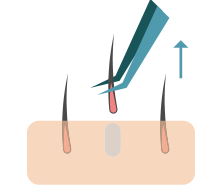 0.8- 0.9 mm diameter, takes the whole follicular unit, which is afterwards stored in the special solution after extraction up to the moment of transplantation. This phase lasts depending on how many transplants are needed for an intervention lasting one to two hours. Upon completion of the extraction, holes are spontaneously closed and treated only with antibiotic ointment or gauze.
0.8- 0.9 mm diameter, takes the whole follicular unit, which is afterwards stored in the special solution after extraction up to the moment of transplantation. This phase lasts depending on how many transplants are needed for an intervention lasting one to two hours. Upon completion of the extraction, holes are spontaneously closed and treated only with antibiotic ointment or gauze.
3. Making incisions (holes) for transplants
The patient is in the half-sitting position and can read, use the cell phone or communicate with the team so that he could have the feeling that the time passes more quickly. The patient is also administered local anaesthesia 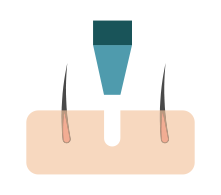 so that the whole intervention is painless.
so that the whole intervention is painless.
The surgeon uses small micro blades that make holes in which transplants are inserted. Holes are made based on a particular pattern, taking care of their position and following natural hair growth. The result should be such that the transplanted hair does not differ from non-transplanted hair. This phase is short and lasts less than 30 minutes.
4. Implantation of transplants
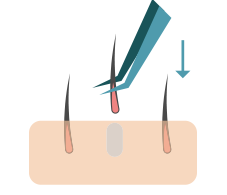
The duration of this phase depends on the number of transplants to be implanted. After completing the procedure and detailed checks that every transplant is properly implanted, antibiotic ointment and gauze are placed in this region.
After the intervention, the patient is discharged on the same day. The package that the patient gets on discharge contains an antibiotic with instructions. The patient should sleep on his back, and/or on the donor site. The donor site is protected by gauze. In case of pain, an analgesic can be taken.
The first control examination will take place the next day. The bandage is taken off the donor site and from that moment
remains open to spontaneously heal. The patient is advised not to engage in sports and not to expose to direct sunlight in the next 10 to 14 days.
It is possible to wash the hair next day with a shampoo that is included in the package. Hair should be washed once a day until the tenth day.
The second control examination takes place on the seventh day and the third control examination takes place on the fourteenth day, after which no special care will be required.
The transplanted hair in the receiving site will grow by the end of the second week, then it will gradually fall out until complete disappearance. This process cannot be stopped. This condition of the hair rest lasts three to six months after which the hair starts to grow again. By the ninth month of intervention, most of hair has started to grow again.

Platelet-Rich Plasma (PRP) is a platelet-rich plasma that has been successfully used in medicine for years due to the powerful effect on tissue regeneration and healing. Platelets are known for their importance in blood clotting, but contain numerous growth factors and bioactive proteins that affect hair regeneration and restoration.
By using the PRP method, it is possible to stimulate the growth of new hair in a condition such as genetically conditioned androgenic alopecia, autoimmune alopecia areata or other types of alopecia in which hair loss is extensive. The thin hair becomes thick, and the sparse hair gets denser.
The best results are achieved in the initial stages of hair thinning. The treatment activates hair follicles that move from the resting phase to the active phase of growth.
PRP treatment procedure:
Platelet-rich plasma is obtained by taking a blood sample from a patient from which platelets are isolated, and their concentration increases during the process called “centrifugation”. During this process, platelet concentration
and its growth factor in plasma increases by 5-10 times. The PRP is then injected by use of miniature needles into the skin of the region where the hair is thinned. The region is previously anesthetized locally, so the inconvenience during treatment is minimized.
The treatment lasts for an hour or two, including preparation and recovery time. Most patients continue their daily activities immediately after the treatment.
Three treatments are required - the first-basic treatment, the second treatment after a month and the third treatment after three months. The treatment lasts for up to a year and no adverse reactions have been recorded so far, and can be combined with other standard hair growth treatments. PRP and hair transplantation:
PRP therapy is very effective after the FUE hair transplantation method, because platelets are necessary in wound healing.
Platelet-rich Plasma (PRP) stimulates the formation of new blood vessels and generation of a new collagen. White blood cells are stimulated to eliminate bacteria and prevent the occurrence of infections. The region from which transplants are taken gets healed and recovered faster, while the growth of transplanted hair is further stimulated.

Beard transplantation is a surgical procedure that permanently resolves the lack or thinness of the facial hair. A beard is a symbol of masculinity, and is always fashionable.
The FUE transplantation method can increase the beard density, fill the voids or cover scars. The intervention is minimally invasive and painless owing to the administration of local anaesthesia. It may last several hours and the amount of follicular units depends on the region that the patient wants to fill and ranges from 500 to several thousand follicles per side.
The donor site from which each transplant is taken individually is usually the rear part of the head, where hairs resemble the beard in colour, quality and thickness most. Hairs can also be taken from arms, legs or back. It is necessary to crop hairs in the donor site to 1-2 mm in length, in order to take the transplants more easily. The procedure is painless and is performed in local anaesthesia. The holes remaining in the donor site after taking out the transplant are very small and spontaneously heal after 24 h, leaving no visible scars behind.
In the region that the patient wants to have filled with transplants, small holes are made in which the transplants are implanted in the direction towards the natural growth of the beard, moustache and sideburns. The transplanted hairs begin to grow immediately after the intervention. After seven days it can be shaved for the first time and after that on regular basis.
Transplanted beard, moustache and sideburns are completely natural looking, without any visible traces of transplantation, and the transplanted hairs are permanent.

Eyebrow transplantation is a surgical procedure that permanently resolves the lack or thinning of the eyebrows. In the last few years it has become popular in our country, among both sexes. Beautiful eyebrows are not always a gift of nature, but also the result of a skill. The period of primitive plucking has gone and it is now clear that eyebrows are a decoration on the face, because they emphasize the eyes, additionally express emotions, and from the morphological aspect they prevent water, sweat or dirt from getting in the eyes. Eyebrow transplantation is designed to restore eyebrows that are thin, sparse, scarred, or for some reason are completely or partially missing. The appearance of the eyebrows after the transplantation is natural, as opposed to tattooing or drawing. The lack is compensated by one’s own hair from the donor site, and it is usually the rear part of the head.
The eyebrow transplantation process is performed by the FUE method based on the same principles as in hair transplantation.
Transplants that contain one or two hairs are chosen in order to achieve as natural appearance as possible. The desired appearance of the eyebrows is
precisely planned in agreement with the patient. Under local anaesthesia, in the region of the eyebrow, small holes are made, 0.5 mm in diameter, in which the previously isolated hairs are inserted. It usually requires 50-250 transplants in order to achieve the natural appearance of the eyebrows.
The procedure lasts about three hours, after which the patient can go home. Swelling, bruises and red skin may be expected in the region of the eyebrows and upper eyelids, which will disappear completely after 5-7 days. Transplanted eyebrows grow in the first two weeks after the intervention, after which they fall out, which is a completely natural and inevitable process. Hairs start to grow again three months after intervention, and the final result can be expected in 9-12 months after transplantation. Transplanted eyebrows grow faster than the existing ones and must be cropped regularly, usually once in ten days, and their growth will slow down over time. Density, direction and hair distribution are completely identical to natural eyebrows, and since the transplanted hair is permanent, there is no need to repeat the procedure after a certain period of time.

Mesotherapy is a minimally invasive medical method by which active substances are injected into the middle layer of the skin, mesoderm, avoiding in that way the systemic effect of medications. Injection cocktails are specifically selected before injection, based on the condition that is treated and the effect that we want to achieve. Mesotherapy has long been used in facial rejuvenation treatments, cellulite treatments, treatments of locally accumulated fat deposits, wrinkles, hyper-pigmentation, etc. French physician Michelle Pistor first applied this technique more than 50 years ago, and the procedure has now been applied by thousands of physicians around the world.
Hair Mesotherapy is important for the prevention and treatment of hair loss. Before the procedure, it is important to determine the cause of hair loss and decide whether mesotherapy is the most effective choice of treatment. It is the best choice for androgenetic alopecia, telogenic effluvium (acute and chronic), in thin, brittle and sparse hair, slowly growing hair, and sometimes also in alopecia areata. It is important to determine the frequency of the treatment. The first few treatments should be performed within a shorter period of time to stimulate hair growth, and then the results are maintained by occasional treatments.
Mesotherapy can also be used after hair transplantation as an additional stimulating therapy.
The cocktail for hair mesotherapy contains all beneficial materials that slow down hair fall out, strengthen the root and stimulate a new growth. The cocktail may contain substances that improve circulation, stimulate hair growth, have an anti-inflammatory effect, prolong the active phase of growth, prevent fall out and help the production of energy necessary for feeding of the follicle itself.
Mesotherapy is performed with thin needles and cocktails are injected directly into the scalp at a depth of 1-2 mm. The procedure is minimally invasive and painless, lasts about 15 minutes and does not require local anaesthesia. The patient can wash his hair on the same day and resume immediately everyday activities. The treatment can be combined with other hair loss treatments, and is used as an additional method for hair transplantation.
The first results are visible after six to eight treatments, after seven to ten days, and then the frequency gradually decreases. After two to three months, the hair begins to grow. Maintenance treatments are applied when a physician estimates that it is necessary.
On the recommendation of a friend from Croatia, my colleagues and I decided to do hair transplantation in your hospital. More transplants than what we had agreed upon were implanted, only to make the final result better. We were delighted by your professional and fair approach. We would recommendation the Colić Hospital to anyone.
I was very much satisfied with the treatment and the result of hair transplantation. It was really painless and the time passed in a pleasant atmosphere.
My friend comes to the intervention in May and I will come with him to visit you.
A year and a half ago, I had hair transplantation in the frontal hairline. I am glad that I listened to your advice and I am very pleased with the outcome. Now my hair is as it was 10 years ago :)
Thanks a lot to you and your team.
Kind regards,
After the first month or two I wondered whether I did the right thing. Now it’s been 5 months since the transplantation and the hair began to grow again. I’m very excited, I just want to thank you once again and I wish you a lot of luck in the future! You’re the best! Soon I will be able to do my favourite hairstyle again. Nina thanks a lot!:)
Dear dr Nina, Thanks to you and the team I have real results as you said I would. I commend you for your professionalism and kindness. Looking forward to see you again when I visit Serbia.
Founded in 1989, our hospital was the first private healthcare institution in the country, specializing in and dedicated to health and beauty for years now. The headquarters of the European Representative Office of the International Confederation for Plastic, Reconstructive and Aesthetic Surgery (IPRAS), the Centre for Obesity Treatment, as well as the Serbian Association for Breast Reconstruction of the Breast are located within the hospital. Hospital “Dr Colić” is the only hospital in our country that holds American accreditation for performing surgical activities. The hospital is located in Belgrade downtown and provides complete comfort and privacy. In a luxurious space of 400m2, everything is in the service of providing comfort and safety of patients - from the most modern medical equipment to special rooms for preparation, surgery and recovery. Hospital “Dr Colić” has over 30 permanent employees, whose expertise and experience is our highest value and quality guarantee. Our medical team has over 20.000
satisfied customers worldwide. The business principle of Hospital “Dr Colić” is a continuous improvement and expanding boundaries. We are proud of declaring that many innovative surgical techniques were first performed in our hospital in this area. Physicians in our team are highly regarded as experts, professors and instructors in the country, but also in specialized circles and among prominent colleagues in the world. Many professional trainings, hundreds of published papers in the country and abroad, as well as the participation of our team at congresses and symposia, are some examples of development, promotion and quality that we are committed to. Considering our commitment to beauty and preservation of health, hospital “Dr Colić” today provides its clients with a special line of cosmetics Dr Colić Beauty Therapy, awarded in 2012 as the best cosmetic brand in Serbia by Cosmopolitan magazine. The hospital is managed by its owners MD/PhD Miodrag Colić and Prim. Dr. Milan Colić.

Plastic Reconstructive and Aesthetic Surgery Specialist
Subspecialising in aesthetic surgery, regular attendee and lecturer at international congresses of aesthetic surgeons, favourite among patients and colleagues. In 2014, Nina was appointed national trainer for Botox and fillers on behalf of Allergan company. Since 1994, she has been engaged in the most modern trends in hair transplantation. She is a member of ISAPS and IPRAS.
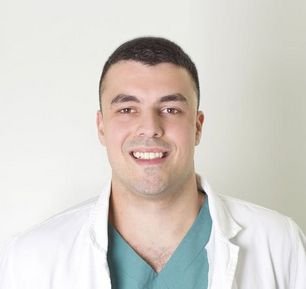
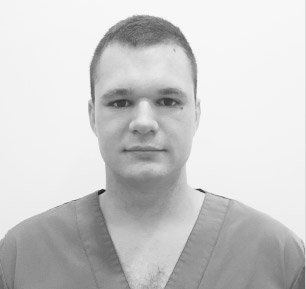
Mr Musić graduated from the School of Medicine, University of Belgrade. He pursued clinical internship at the CHC Serbia and PHC Stari grad. Upon completion of internship he became a full time member of Colić Hospital team. He is engaged in all aesthetic surgery procedures and has a special interest in FUE hair transplantation method. He regularly attends congresses in the area of aesthetic medicine.

Graduated from the College of Vocational Medical Studies, department of vocational nutritionist-dietician. Prior work experience was acquired in the area of aesthetic dermatology, which ensures that she can participate in hair transplantation together with physicians as well as in skin care after completion of surgical procedure. Satisfied patients describe her as kind, smiling and warm person.
